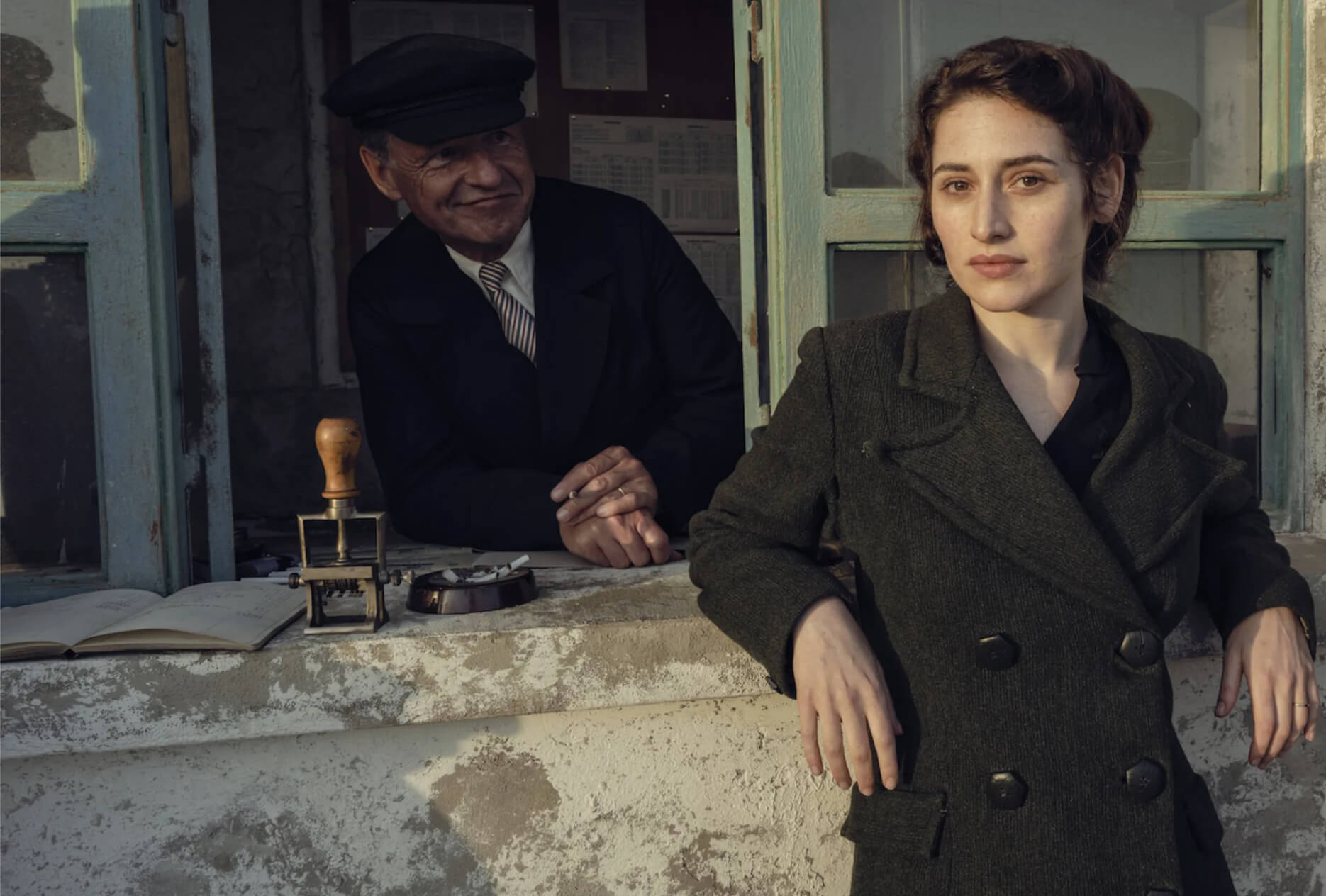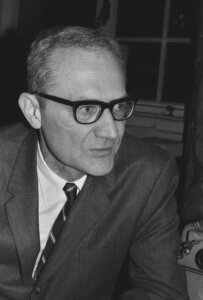The heroic WWII rescue story that Netflix’s ‘Transatlantic’ leaves out
The Jewish Labor Committee rescued more than a thousand Jews — so why hasn’t anyone heard of them?

Like the Julie Orringer novel on which it’s based, Transatlantic strays from history for the sake of drama. Photo by Netflix
Ahead of the June 1940 Nazi invasion, Jeffim Israel fled Paris to southern France. The 54-year-old refugee was desperate to get himself and his family to America. The Israels were not just Jewish and stateless; Jeffim was also a prominent member of the Menshevik party — Russian Socialists who were jailed and exiled by the more radical Bolsheviks after the October 1917 revolution.
A journalist who participated in the coup of the Russian czar, Jeffim held an official government position before Lenin’s reign of terror. After five years in prison, the Mensheviks were exiled. Jeffim, his wife Ida, and children, Max, 7 at the time, and Julia, 3 months, moved along with the others en masse to Berlin in 1923. There, Jeffim wrote political articles and was an editor for a Russian language publisher. With the rise of Nazism in 1933, the Mensheviks relocated again to Paris, then to Toulouse. The Israels were certain to be on the Gestapo’s list.
Jeffim had family in the Bronx. His four cousins, from the same tightknit Orthodox family in the Belarussian shtetl of Nesvizh, came to New York before World War I. The oldest of the cousins was Wolf Israel, my great-grandfather, an itinerant religious teacher for bar mitzvah boys in Russia; he cleaned subway cars in New York.
But the American double-cousins — as they were called since Jeffim’s parents were also cousins— could not help their European family secure visas. The U.S. government’s quota system made immigration nearly impossible.
Then, in July 1940, something miraculous happened.
“America was becoming a reality,” Jeffim’s daughter Julia Israel Schueler wrote months before her death in her 1999 memoir Elsewhere, “an executive decision at the State Department level made it possible for political refugees to enter the golden shores of the United States on an emergency visa.”
“Train tickets appeared like manna from heaven,” Julia, who was born in Moscow in 1923, wrote, “with a small allowance for the necessary stay in Marseille.”
Contacts secured the necessary visas and arranged for the complex wartime voyage through Spain and Portugal. Critically, when the son Max, now an adult, and his wife Margot could not obtain Vichy France exit visas, they were smuggled over the Pyrenees by foot, and across Franco’s Spain. An arrest could have meant being handed over to the Gestapo.
Finally, in October 1940, the Israels sailed into New York where my grandmother’s uncle and aunts awaited.
“So here was the diminutive Moses, his diminutive sister Gittel and [sister] Sarah by his side, welcoming us at Ellis Island,” Julia, who taught French and German at Tulane University, remembered almost 60 years later. The cousins, she recalled, found Jeffim a job in a chemistry lab and took her on a “Saturday afternoon shopping spree at Macy’s” to Americanize her wardrobe.
A Netflix series we’d like to see
If this tale of emergency visas and clandestine wartime escape from France sounds like something that could be in the Netflix series Transatlantic, it’s not. The new limited series by Unorthodox creator Anna Winger offers a fictionalized version of the story of the American journalist Varian Fry, who exfiltrated artists and intellectuals targeted by the Nazis, like Hannah Arendt, Marc Chagall and Max Ernst, from France in 1940 and 1941,
My great-grandfather’s cousins were aided by the lesser-known Jewish Labor Committee (JLC), a New York-based organization that saved Jewish and gentile Socialists and labor leaders from across Europe.

“Varian Fry and the JLC’s interventions were entangled,” the French historian Catherine Collomp wrote me, “often serving the same persons, and collaborating for the same purpose of rescuing people of remarkable cultural, social or political influence.”
The JLC, which still today promotes Jewish labor interests, formed in 1934 in reaction to the rise of European antisemitism. It has deep connections to this publication. The JLC was the brainchild of the Forward general manager Baruch Charney Vladeck, who became its first president. After his death four years later, he was succeeded by Forward Association present, Adolph Held. Their offices were located in the Forward building on the Lower East Side.
According to Collomp, who wrote the 2021 book Rescue, Relief, and Resistance, about the JLC during the Holocaust, it rescued around 1,500 people in France and ferried hundreds of members of the Polish Bund (a Jewish Socialist party) from Lithuania through the USSR and Japan to the United States. These numbers are comparable to Fry’s group the Emergency Rescue Committee (ERC), which according to the U.S. Holocaust Memorial Museum rescued around 2,000 Jews and anti-Nazi figures.
The JLC’s work went beyond rescue efforts. They provided humanitarian aid to Jewish refugees and managed to send relief to Jews in Nazi-occupied areas. During World War II, the JLC’s refugees and the leaders’ connections to underground socialist networks helped the American war effort with intelligence and propaganda. The JLC itself supported Jewish and non-Jewish partisans from France to Poland.
In his 1946 memoir, The Ghetto Fight, Marek Edelman, a militant Bundist leader in the Warsaw Ghetto, recalled witnessing the JLC parachute $120,000 into Poland to purchase black-market weapons for the 1943 ghetto uprising.
I’d love to see that Netflix series featuring Jewish immigrant needle trade workers riding the subway downtown to East Broadway to fight Nazis. Yet, while the efforts of ERC and the JLC were intertwined, Transatlantic omits the Jewish socialist worker side of the story. It seems that painter Max Ernst and art-collecting heiress Peggy Guggenheim romancing over Champagne makes for better television than JLC and Garment Workers Union presidents plotting over borscht. High class wins out over class consciousness.
It’s not surprising that Winger and her co-creator Daniel Hendler left out the JLC storyline; so does Julie Orringer’s novel, The Flight Portfolio, which the Netflix series is based on, as do past books, museum exhibits and documentaries about Fry. The American journalist rescued famous artists and intellectuals with funding from well-known American institutions like the Museum of Modern Art, the Rockefeller Foundation and Carnegie Foundation.
“Their celebrity status was transferred to Varian Fry himself,” Collomp said by phone from Paris.

“The JLC leaders and all its members were workers, Jewish or not,” she added. The refugees they saved, like the Austrian socialist Friedrich Adler, the Italian writer Nicola Chiaromonte, and the German editor of the newspaper Vorwarts, Friedrich Stampfer, were influential historical figures but lacked the same cachet.
The JLC was uniquely positioned to leverage American worker power to help European socialists and labor activists. The organization was led by Jewish immigrant labor leaders. They had both deep connections to workers’ movement in Europe, and clout with American unions and politics. Vladeck, the JLC founder, had fled Russia after participating in a failed coup of the czar in 1907. In New York, he was elected to the City Council. Vladeck and other JLC leaders were keenly aware of the threat of Nazism and had the power to act upon it. At their behest, the American Federation of Labor successfully lobbied the State Department for emergency visas. “Conveyors of ideas between two worlds — Europe and the United States,” Collomp wrote, “the JLC leaders also became smugglers of people, providers of money, and creators of hope.”
The Forward’s fingerprints were all over the committee’s activities. In September 1940, the JLC rescued prominent Menshevik leader Raphael Abramovitch and his family through Marseille. Not only was Abramovitch a correspondent for the Yiddish daily, but the Forward’s editor in chief Ab Cahan is listed as his New York contact on the ship manifest. Other Forward staff appear on refugee paperwork. The editor Lazar Fogelman’s name was given by my relatives.
‘I am sorry that this series exists’
Transatlantic has been criticized for taking too many liberties with the history of the ERC. Winger, in an attempt to appeal to a wider audience, fabricates salacious subplots such as inventing a secret gay lover for Fry. She also erroneously shows them plotting with the African and Arab partisans. The ERC, like the JLC, did break laws. They falsified documents, smuggled people and money across borders, and bribed officials. Fry’s group also helped British intelligence, as shown in the series, and some of his collaborators were later part of the resistance. But Collomp told me, “the resistance had not begun in 1940-41. And certainly not as a form of anti-colonial resistance.”
At my urging, Collomp watched the series. “It trivializes the situation and the historic characters,” the Université Paris Cité emerita professor emailed me back. By adding in contrived personal storylines and misinterpreting the politics, she argued Transatlantic was “missing the true political dimension of Varian Fry’s mission” and the “collective motivations” of the ERC.
“It did not rely on Mary Jane Gold’s money, as is presented in the series, but on collective fund-raising done in the States,” Collomp wrote. She also wished it included some of the political figures Fry tried to help. like Giuseppe Modigliani, the former anti-fascist socialist opponent to Mussolini.
“I am sorry that this series exists,” Collomp concluded.
Pierre Sauvage, president of the Varian Fry Institute, called the series’ departure from the truth “shocking.” “Can one fictionalize at will, with no concern for the reality of the story, for the false impression that people will get — and for the way it affects the private lives of the families of people portrayed?” he told the Jewish Telegraphic Agency.
Indeed, the artists and writers appear as caricatures of themselves: Poor Walter Benjamin, a sharp thinker already imprisoned once, comes across as drug addled and irrational. Winger also manages to make Marseille simultaneously more dangerous and more glamorous. During the time the series is set, there was still no Nazi military presence in the south of France and no round-ups — those would start in the summer of 1942.
Taking liberties with the historical record
Winger, who was inspired by the film Casablanca, sets much of the action of her series in the Hotel Splendide, a Wes Anderson-like grand hotel with uniformed concierges. “Hotel Splendide (despite its name) was a dingy little hotel near the railway station,” Collomp said in her email.
Unlike in Transatlantic, my distant cousin Julia’s memories of the south of France do not include Champagne parties. “For the three months we stayed in Toulouse, we got up hungry and went to bed hungry,” she wrote in her memoir. “Day in, day out my job was to stand in line, any line, in hopes of finding a potato.” She described Marseille as overrun by Nazi loyal Vichy police and criminals. A parting gift from family friends from the port city was boiled eggs, a loaf of bread and a piece of sausage, which she said was “the result of a week’s assiduous hunt in the surrounding countryside.”
In all the reviews of Transatlantic, I have yet to see mention of the JLC — probably because the writers never heard of it. Most of the JLC’s work was secret, much of its archives are in Yiddish, and the committee never commemorated its heroic work. “To this day, scholars have not traced the JLC’s history in a substantial way,” Collomp wrote in the afterword of her book.
Even Fry snubbed the committee. In his 1945 memoir Surrender on Demand, he briefly mentioned the work of the committee’s Marseille liaison Frank Bohn, but not the JLC directly. And as for my cousin Julia, six decades later, she remembered enough details about my grandmother’s family to offer a sketch of her “American cousins” who “conversed in English with a heavy Bronx accent overlaying traces of Slavic intonation.” But when it came to the JLC, she drew a blank: “Our trip was sponsored by a rescue committee whose name I have forgotten — the American Jewish Rescue Committee?”
Collomp confirmed in archival documents that the Israels did come courtesy of the JLC. She wasn’t surprised that Julia didn’t know the name. “The organization of rescue channels in 1940–1941 demanded absolute discretion. Its origin and mechanisms had to remain secret so that the operation would not collapse,” she wrote. “The survivors themselves did not necessarily know to whom they owed their salvation.”
Now, if only someone would make a Netflix series.
























